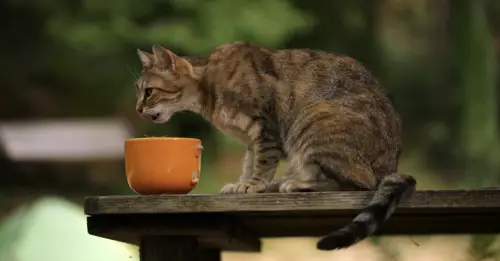Cats are fascinating creatures with complex dietary requirements that many owners might overlook. While a cat’s feeding routine may not demand the same rigidity that a dog’s might, ensuring your feline friend receives the appropriate nutrients at the right amounts is crucial for their overall health. Through an analysis of their natural instincts, developmental stages, and modern feeding practices, we can establish a better understanding of how to cater to our cats effectively.
Cats are natural hunters, an instinct that remains embedded in their behavior even after thousands of years of domestication. Unlike dogs, who have built a reputation as pack animals, cats tend to lead solitary lives, often hunting for small portions of food throughout the day. In the wild, it’s common for a feral cat to consume around eight to twelve small meals daily, targeting smaller prey such as rodents or birds.
This necessity to hunt small, frequent meals provides insight into the importance of meal size and frequency for domestic cats. By mirroring these natural behaviors, pet owners can promote better health. However, it’s worth noting that not all cats will require the same feeding strategy; factors such as age, weight, and specific health conditions greatly influence their dietary needs.
As cats progress through their life stages, their dietary demands evolve significantly. Kittens require an energy-rich diet, necessitating higher food intake relative to their body weight. Their rapid growth and energetic nature require multiple small meals throughout the day, making it essential for owners to provide an adequate feeding schedule during this formative period.
Once a cat reaches adulthood—around one year of age—the feeding schedule can become more flexible, with many adult cats accommodating irregular meal times provided they receive the necessary nutrients in a day. However, this changes as cats become seniors at approximately seven years of age. Senior cats often benefit from a more structured feeding schedule, as consistency can help manage health issues that arise with age, ensuring they maintain a healthy weight and nutritional intake.
Frequent begging or unusual eating patterns can sometimes indicate underlying health issues rather than simply a hungry cat. Illnesses such as hyperthyroidism or diabetes frequently manifest through increased appetite and weight fluctuations. Therefore, if your cat seems unusually hungry despite receiving regular meals, it’s vital to consult a veterinarian to explore these possibilities.
Obesity is another growing concern among domestic cats. In the United States, the prevalence of overweight cats outweighs those at a healthy weight. Maintaining a proper diet is crucial as it can prevent various health-related issues. Owners should consider portion control along with increased activity levels to combat unwanted weight gain.
When faced with selecting a feeding strategy for your cat, there are generally two primary approaches: free feeding or scheduled meals. Free feeding allows cats to graze throughout the day, which can work well for homeowners who are away for extended periods. Nonetheless, this method can inadvertently lead to overeating, especially with dry food that might be less desirable to cats compared to moist options like wet food or raw diets.
Scheduled meals tend to have favorable outcomes, particularly when managing weight, as they facilitate portion control and routine. Establishing a feeding schedule allows for monitoring your cat’s food intake more effectively and can help assure that each pet is receiving appropriate amounts without overindulgence.
In households with multiple cats, tracking individual eating habits can pose a challenge. If each cat is fed differently or by different individuals, there’s potential for confusion regarding portion sizes. To avoid mishaps, keep a clear log of who feeds whom and how much. Observing each cat’s eating patterns and maintaining communication among household members can assure that everyone receives their needed nutritional intake without overfeeding.
Additionally, consider your household dynamics when scheduling your cat’s meals. Crafting a feeding routine that aligns with your own schedule can alleviate stress for both the owner and the cat. Whether morning or evening works better, what truly matters is ensuring each cat meets its daily dietary requirements.
Feeding our feline companions should be an attentive and informed endeavor. By recognizing their inherent instincts, adjusting feeding routines according to life stages, and being vigilant about health signs, we can establish a beneficial feeding routine. Engaging with your veterinarian when questions arise further promotes a sound feeding strategy tailored to your cat’s needs. In collaboration with capable resources like Nom Nom, ensuring your cat enjoys nutritious meals tailored to their health becomes easier. Prioritize your cat’s dietary wellness and take actionable steps to reign in good health and longevity.

